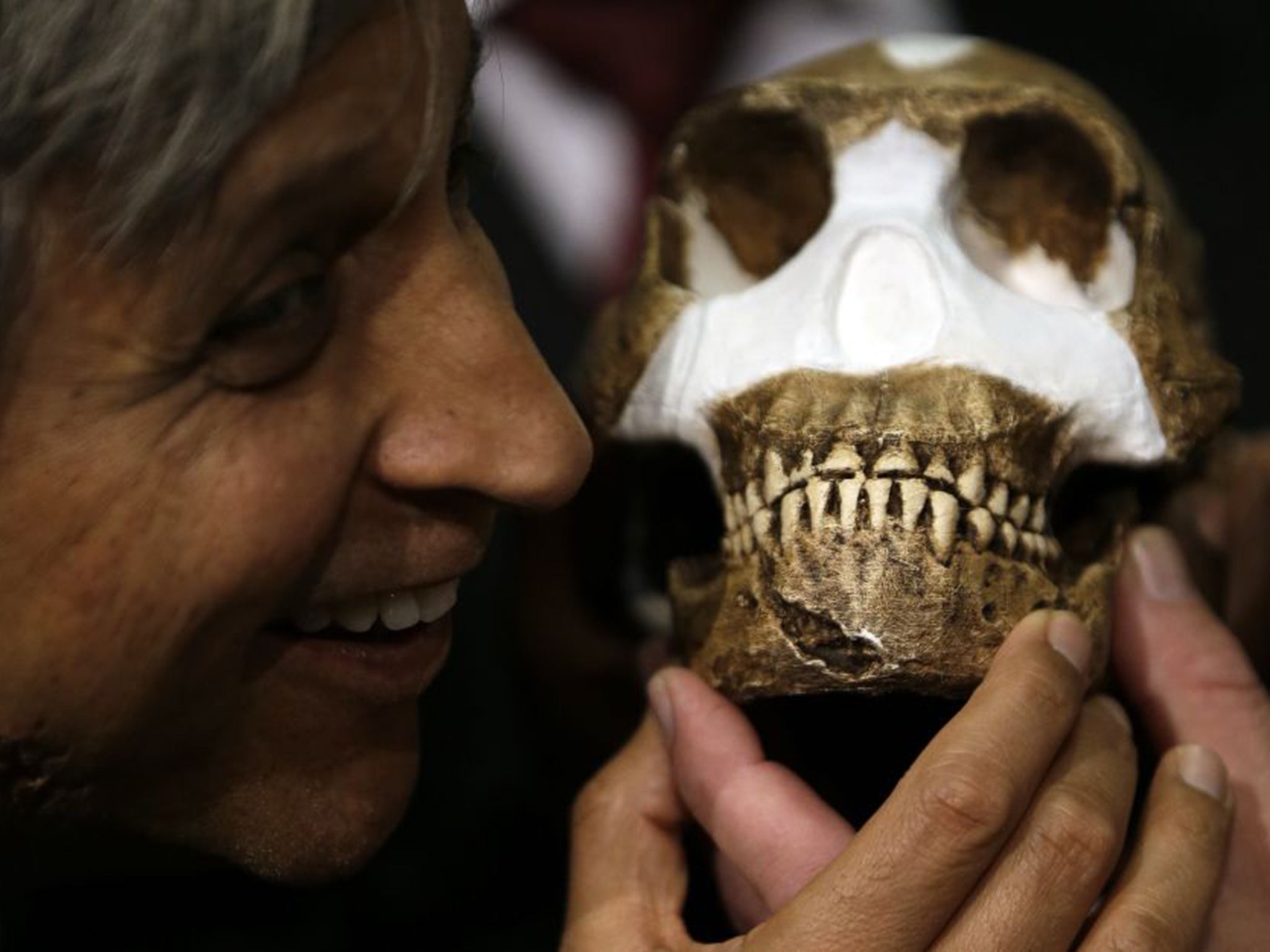Homo naledi: Discovery of new species means link between intelligence and brain size is no longer clear
Mix of ancient and modern features appears to set these hominins apart as a separate species of Homo

Your support helps us to tell the story
From reproductive rights to climate change to Big Tech, The Independent is on the ground when the story is developing. Whether it's investigating the financials of Elon Musk's pro-Trump PAC or producing our latest documentary, 'The A Word', which shines a light on the American women fighting for reproductive rights, we know how important it is to parse out the facts from the messaging.
At such a critical moment in US history, we need reporters on the ground. Your donation allows us to keep sending journalists to speak to both sides of the story.
The Independent is trusted by Americans across the entire political spectrum. And unlike many other quality news outlets, we choose not to lock Americans out of our reporting and analysis with paywalls. We believe quality journalism should be available to everyone, paid for by those who can afford it.
Your support makes all the difference.There are two immediate questions about this astonishing find – and it really is one of the most astonishing finds in the history of human palaeontology, certainly on the continent of Africa.
The first is whether this really constitutes a new species, or whether it is just a population of Homo erectus who just happened to be smaller than usual? And the second is whether they really did bury their dead as part of some kind of repeated ritual?
Professor Chris Stringer, head of human origins at the Natural History Museum in London, said that, overall, the fossilised bones appear most similar to the small-bodied examples of H. erectus, the first species of humans known to roam widely outside Africa.
However, he accepts that the features of the skeleton are a mix of old and modern characteristics with the small brain size (one third that of modern humans), curved fingers and joints of the shoulders and hips being similar to the older Australopithecus, which pre-date Homo, and the early human species Homo habilis, or “handy man”.
Yet the wrist, hand, legs and feet look most like those of the Neanderthals, which lived as recently as 35,000 years ago, as well as anatomically-modern humans, Professor Stringer says in an analysis published in the on-line journal eLife, where the description of Homo naledi is published.
So the mixture of ancient and modern features appears to set these hominins apart as a separate species of Homo. Certainly the scientists behind the research discount any suggestion that they have just stumbled upon another kind of H. erectus.
The second question of ritual burial is even more intriguing. If true, and it does appear to be the only plausible explanation so far, then how could a species with a brain no bigger than an orange communicate and organise itself to take part in this highly symbolic behaviour?
Read more:
It challenges our notion of the brain power needed for language, for instance, or even our concept of the link between intelligent behaviour and brain size. As Professor Stringer said: “The intentional disposal of dead bodies is a surprisingly complex behaviour for a creature with a brain no bigger than H. habilis or a gorilla.”
Another unanswered question is how old are these fossils? Dating is now underway, but the species itself could go back further than 2 million years, to the birth of the human lineage itself.
Join our commenting forum
Join thought-provoking conversations, follow other Independent readers and see their replies
Comments